What’s the Difference Between Espresso and Drip Coffee?
Espresso and drip coffee vie for your taste buds, each with unique characteristics. Espresso shots encapsulate rich, intense flavors in small volumes, exuding a bold taste that invigorates the senses. This brewing method applies pressure to finely ground coffee, producing a concentrated burst of flavor. In contrast, drip coffee embraces a gentler approach, allowing hot water to gradually filter through coarser grounds, resulting in a mellow, lighter cup meant for leisurely enjoyment. While espresso speaks in bold declarations, drip coffee whispers a slow, comforting serenade, offering diverse experiences to savor.
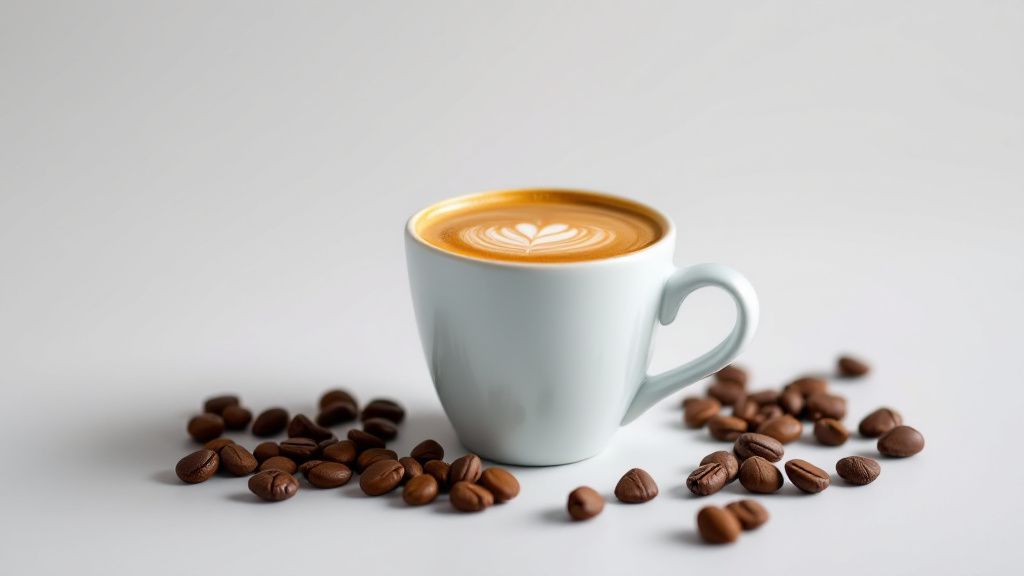
What is Espresso
An espresso is a powerful elixir in the world of coffee, offering an experience much like the striking intensity of a symphony's crescendo. This beverage, crafted with precision, involves forcing hot water through finely ground coffee under high pressure. The result is a robust, concentrated shot that delivers an invigorating jolt of flavor and aroma that can carry you through the day.
Visualize espresso shots as a condensed burst of energy, akin to a tightly coiled spring. Just like that spring, it holds immense power, releasing its potent essence as soon as it touches your lips. The process creates a rich, creamy crema that floats atop the liquid, reminiscent of a silk cap on a bold brew.
The espresso's trademark lies in its compact serving size, yet within that modest volume, it encapsulates a depth of taste many find irresistible. Each sip provides a layered palette of flavors, from bittersweet notes to subtle hints of chocolate and caramel. This sensory experience defines its allure.
The method of preparation sets espresso apart from drip coffee, emphasizing the role of pressure rather than gravity. This brewing method caters to those seeking an immediate, bold flavor profile, offering an unparalleled coffee experience distinct from the leisurely drip brew.
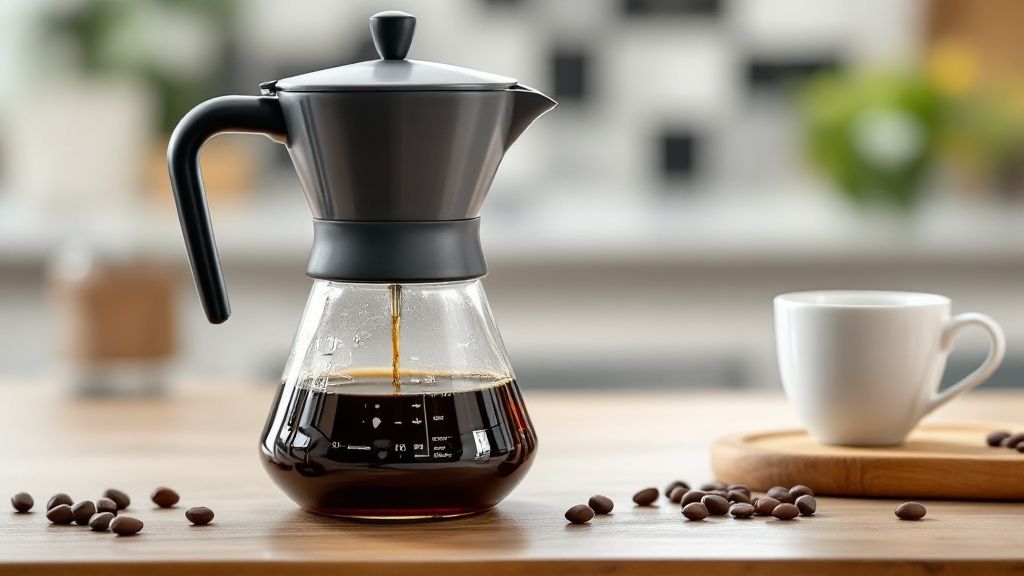
What is Drip Coffee
Drip coffee might be considered the gentle, patient cousin in the coffee family. This traditional brewing method involves hot water delicately dripping through a bed of coarsely ground coffee, using gravity to extract flavors over a set period. The result is a smooth, balanced beverage ideal for savoring over leisurely morning rituals or during quiet office breaks.
Looking at drip coffee through the lens of time, we can see that this method’s slower process reveals nuanced flavors that coffee enthusiasts appreciate. Unlike the rapid infusion of espresso shots, drip brewing extends a warm, inviting experience similar to unwinding with a favorite book on a rainy day. The resulting brew captures a range of subtleties, from floral notes to gentle sweetness.
This coffee brewing method epitomizes convenience and accessibility, commonly used in homes and cafés worldwide. With machines that automate the procedure, you can easily craft a steaming pot to share with friends or accompany breakfast. It offers a large volume without compromising on flavor, distinguishing it from the concentrated nature of espresso.
The allure of drip coffee lies in its simplicity and the sense of ritual it instills. Each drop seemingly crafted with patience, it offers a comforting embrace of aromas and tastes, providing a refreshing contrast to the boldness of espresso.
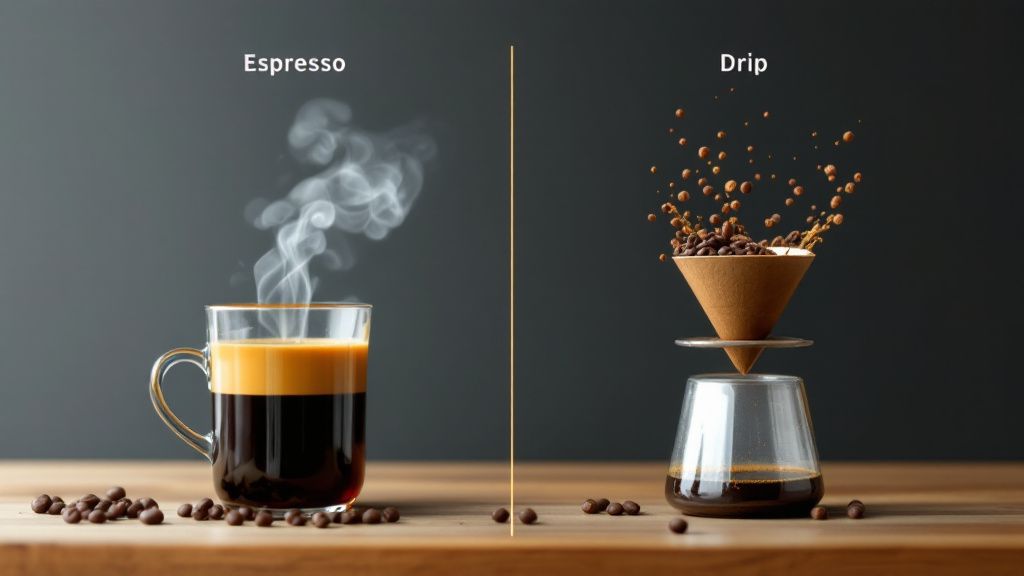
Comparing the Brewing Methods
Brewing methods define the coffee experience, shaping taste, aroma, and overall enjoyment. On one hand, espresso is seen as an art of precision, requiring skill to balance pressure, temperature, and grind size. Fans of this intense brew revel in the complexity each espresso shot offers, where a concentrated blend of flavors is captured in a small cup, awakening your senses with its depth.
Contrastingly, drip coffee advocates appreciate the leisurely charm of a slower brew. This method fosters a calm and steady interaction with coffee, yielding a more diluted taste profile that is gentle on the palate. Drip aficionados argue that the focus is less on intensity and more on subtlety, exploring diverse undertones that a longer extraction reveals.
The equipment used in these coffee brewing methods further differentiates them. Espresso machines are sophisticated, sometimes elaborate devices, celebrated for their ability to deliver high-pressure shots effortlessly. Drip coffee makers embrace simplicity, often just requiring a filter and water reservoir, yet they cater to volume and ease of use without compromising quality.
Ultimately, whether your preference leans toward the bold, concentrated espresso or the mellow, aromatic drip coffee, each brewing method offers a distinct experience. From the spirited energy of espresso shots to the serene pause of a drip brew, both provide endless pleasures for coffee enthusiasts.
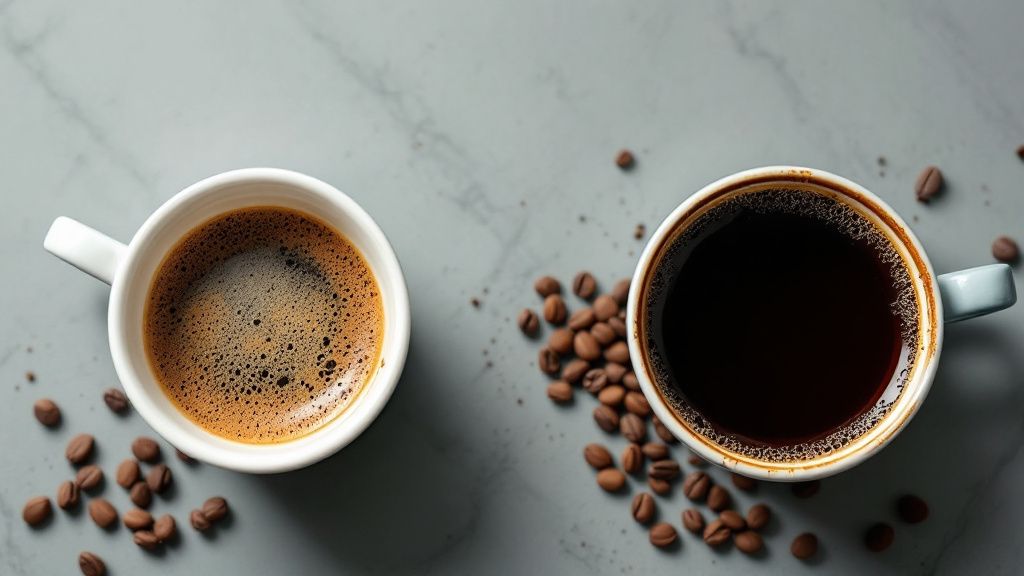
Caffeine Content in Espresso and Drip Coffee
Caffeine content is a pivotal aspect in comparing espresso and drip coffee, influencing your daily energy levels and coffee choice. Espresso is often perceived as the stronger of the two due to its robust flavor, delivering a short, sharp jolt of energy that can power your morning. A single espresso shot typically contains about 63 milligrams of caffeine, packing a potent punch in a small volume.
On the other hand, drip coffee offers a smoother introduction to caffeine. A regular 8-ounce cup of drip coffee contains between 95 to 165 milligrams of caffeine, depending on the bean and brewing duration. This higher caffeine content per serving size means that if you consume a full cup, you're likely getting more caffeine overall than with a single espresso shot, without the intensity of flavor.
One unpopular opinion about espresso and drip coffee is that despite espresso's reputation for delivering a stronger caffeine hit, many underestimate the capacity of drip coffee to provide sustained energy throughout the day. For those seeking moderate caffeine consumption, the slow-brewed drip may be an ideal partner, allowing a gradual caffeine release that maintains alertness over extended periods.
Different coffee brewing methods significantly influence caffeine extraction. With espresso, the coffee's caffeine is concentrated due to high pressure and shorter brewing time, making it ideal for quick bursts of energy. Drip coffee, through longer steeping, tends to extract more caffeine, resulting in a beverage tailored for a leisurely pace but effective wakefulness.
Your caffeine needs can shape your preference, depending on desired impact and duration. Whether you crave the immediate intensity of espresso shots or the leisurely, calmly awakening effect of drip coffee, each brewing method accommodates distinct energy requirements. Whether your day calls for swift jolts or sustained resilience, both choices offer versatility and satisfaction in their caffeine delivery.
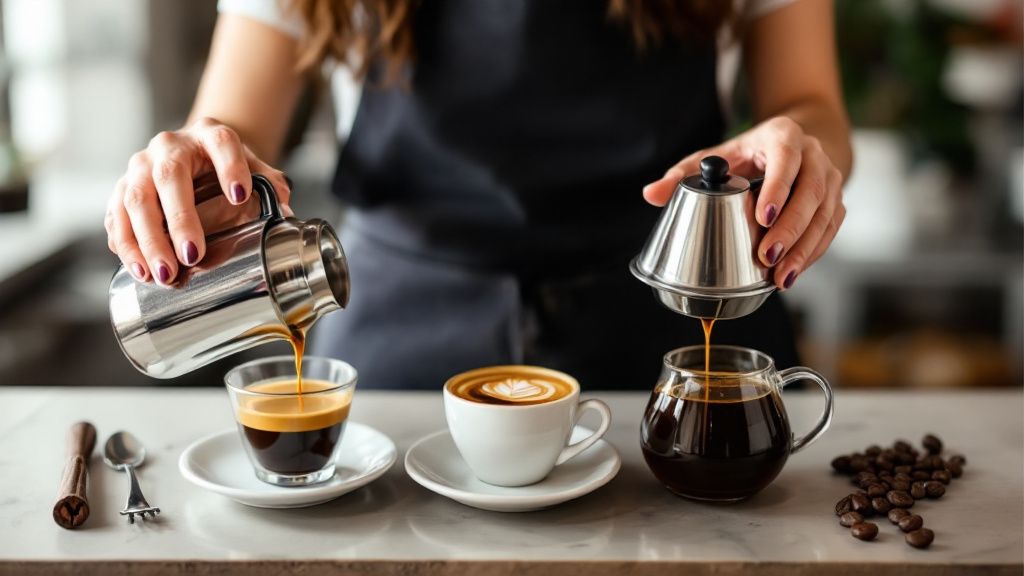
Taste Preferences and Serving Styles
Taste preferences and serving styles offer a window into coffee's cultural legacy and personal rituals. Espresso speaks to those who cherish bold, intense flavors, often serving as the base for indulgent beverages like lattes and cappuccinos. Tracing its evolution from early 20th century Italy, espresso became synonymous with a quick, powerful rush that fueled busy urban lives and social interactions at bustling cafés.
Drip coffee, with its milder flavors, caters to those who savor a prolonged, contemplative experience. Often served in larger cups or mugs, it complements leisurely mornings or work sessions, allowing you to drink at a relaxed pace. This method, popularized in the mid-19th century with the advent of paper filters, became a staple in homes and hotels, offering a comforting familiarity and ease of preparation.
Today, these coffee brewing methods reflect not just taste preferences but an exploration of tradition and modern convenience, each style offering distinct satisfaction aligned with different moments of your day. Whether you lean toward the quick, stimulating allure of espresso shots or the leisurely indulgence of drip coffee, both styles cater to diverse sensory journeys.
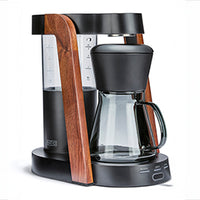 Ratio Eight S2
Ratio Eight S2
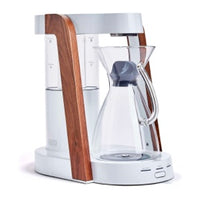 Ratio Eight Original
Ratio Eight Original
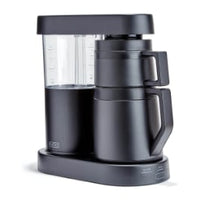 Ratio Six
Ratio Six
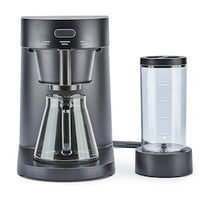 Ratio Four
Ratio Four
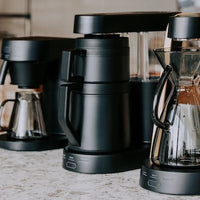 Compare Machines
Compare Machines






